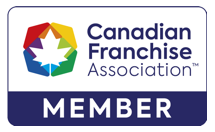In this series of blogs, I have been reviewing the new anti-spam regime that will come into effect on July 1, 2014 under “Canada’s Anti-Spam Law” (CASL). As I have previously discussed, the hallmark feature of CASL is that it is an opt-in regime; senders of commercial electronic messages (“CEM”s) require the express or implied consent of the recipients of the messages.
In order not impose undue burdens on businesses that use e-mail for their day-to-day communications, CASL contains many exceptions to the requirement for consent. If a sender meets one of the exceptions, they do not require the consent of the recipient in order to send a CEM. However, even if consent is not required to send the message, the message must still be in the prescribed form.
A sender does not require the consent of the recipient to send the following types of CEMs:
- A CEM that provides a quote or estimate that was requested by the recipient;
- A CEM that facilitates, completes or confirms a commercial transaction that the recipient previously agreed to enter into with the sender;
- A CEM that provides warranty information, product recall information or safety or security information about a product, goods or a service that recipient uses, has used or has purchased;
- A CEM that provides a notification of factual information about:
- The ongoing use of a product, good or service by the recipient offered under a subscription, membership, loan or account by the sender, or
- the ongoing subscription, membership, account, loan or similar relationship of the recipient;
- A CEM that delivers a product, good or a service, including product updates or upgrades, that the recipient is sent is entitled to receive under the terms of a transaction that they have previously entered into with the sender.
- A CEM that is the first point of contact between the sender and recipient, if the message is sent as a result of a referral from anyone who has an existing business or non-business relationship, or a family or personal relationship, with either the sender or recipient.
These exceptions were written into CASL in order to ensure that the legislation would not impede normal business activities. It would obviously be counter-intuitive to require someone who received a request for a quote to get consent in order to give the quote.
The exact limits of these exceptions are not yet known, however, because they have yet to be tested by the courts.

 2 St Clair Ave West
2 St Clair Ave West


